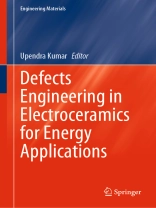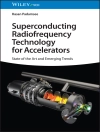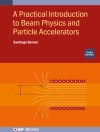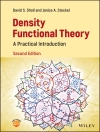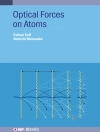This book highlights the history of electroceramics starting from synthesis using different routes of the solid solution to hybrid nanocomposites and its applications in different renewable energy, thermistor, actuators, thermoelectric, thermo-optic, sensor, and much more applications in electronic industry. In ceramic materials, the properties are controlled by doping and composition, but the grain size and the porosity of the sintered ceramics also play essential roles. The latter features depend on the method of fabrication. The end-user requirements define the optimum physical and chemical properties of ceramic materials. Therefore, the design and fabrication of ceramic components are multidisciplinary, spanning physical chemistry, metallurgy, and chemical engineering. Also included in this book are the various characterizing techniques to study the
physical properties of ceramics.
Jadual kandungan
Fundamentals of Solid-State Physics.- Defects in Electroceramics.- PREPARATION OF CERAMICS: DIFFERENT APPROACHES.-Emerging Strategies for Electroceramic Preparation: Contemporary Methods and Novel Techniques.- Foundations of Ceramic Synthesis: Processes, Principles, and Potential Biomedical Prospects.- Thin film preparation of Electroceramics.- FUNDAMENTAL CHARACTERIZATION TECHNIQUES: IMPEDANCE AND MODULUS SPECTROSCOPY.- Defect Engineering for Tailoring Thermoelectric Properties of Electroceramics.- Role of Electroceramics in Renewable Energy Technologies.- Structural Perspective on Multifunctional Oxide Materials.- Bioactive glass for biomedical application: an overview.- Bulk Metallic Glasses: Effect of Various Temperatures with Nature of Constituent elements in Zr-Al/Ti-Ni-Cu BMGs.- Microwave Dielectric Properties of Electroceramics.- Microwave dielectric resonator antenna using electroceramics- A Perspective.- Electroceramics-based materials for sensor technology.- Piezoelectric, Pyroelectric, and Dielectric Properties of PZT: Nylon 11 and Graphite Doped PZT: Nylon11 Composites.- Pyroelectric Properties of Electroceramics.- HEXAFERRITE COMPOSITE-BASED MATERIALS: POTENTIAL APPLICATIONS.- FUTURE PERSPECTIVES OF ELECTROCERAMICS.
Mengenai Pengarang
Dr. Kumar’s expertise is in the field of Experimental Condensed Matter Physics and Electroceramics. He earned his Bachelor’s degree in Physics with honors and his master’s degree in Solid State Physics from Banaras Hindu University (BHU), Varanasi. He obtained his Doctoral degree from the Indian Institute of Technology, BHU, Varanasi. He is currently an assistant professor in the Department of Applied Science at Indian Institute of Information Technology (IIIT) Allahabad, Jhalwa, Prayagraj, Uttar Pradesh (India). He has both, teaching and research experience on ferrites, energy harvesters, and energy storage technologies such as Li-ion batteries, supercapacitors, and solid oxide fuel cells.
